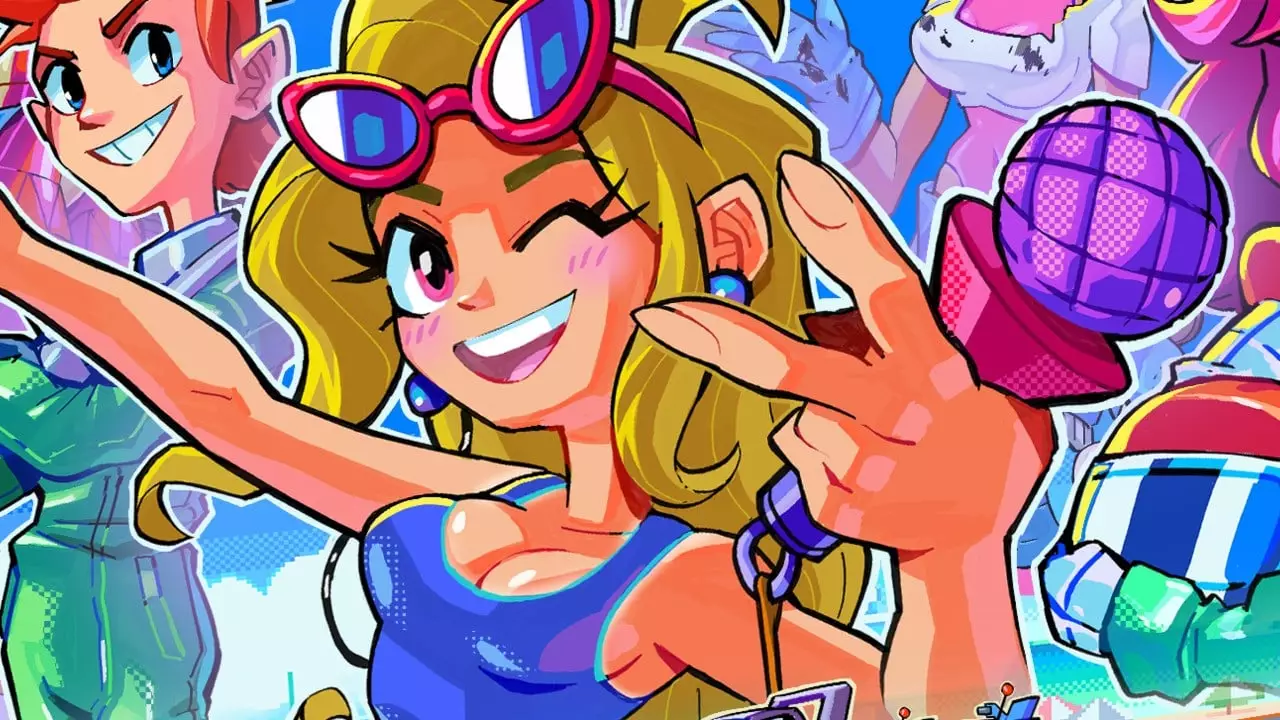When Victory Heat Rally was initially launched on Kickstarter in 2020, it represented a novel fusion of nostalgia and modern gaming. Developers aimed to channel the aesthetic and gameplay thrills reminiscent of Sega’s iconic Super Scaler arcade games from the 1980s—titles that defined an era of racing with their innovative graphics and gameplay. The excitement surrounding its Kickstarter campaign was palpable, driven by a promise to recreate the electrical atmosphere and engaging gameplay found in classic arcade racers like Power Drift. However, as the journey from concept to release unfolded, the essence of what made those arcade experiences special began to dilute, leading to questions about the game’s lasting impact.
Upon the game’s release on the Nintendo Switch, it is apparent that Victory Heat Rally embraced a visual style significantly deviating from its original vision. Instead of the exciting, segmented rollercoaster tracks that evoked fond memories of 1980s arcade racing, players now face a series of tracks that resemble standard 3D environments commonly seen in contemporary games. While the application of cel-shading lends a sense of retro charm, it creates a graphical illusion that attempts to mask a fundamentally conventional polygonal racing experience. Ironically, the visuals, rather than providing a vibrant connection to the game’s inspirations, often diminish the experience by presenting a diluted homage to a once-revered style.
This shift does not strip away all charm; there remains a delightful appeal in the chunky cars that zip across pseudo-3D roadways. However, the initial promise of a visually groundbreaking experience feels unfulfilled, leaving a bittersweet aftertaste for players who yearned for a more authentic nod to the past.
At its core, Victory Heat Rally employs a drifting mechanic that, while satisfying, lacks the depth to ensure long-term engagement. The framework allows players to execute prolonged drifts to gain speed boosts, an approach that can be easily mastered within mere hours of gameplay. However, this simplicity swiftly morphs into a double-edged sword. Instead of providing an evolving challenge, the game’s mechanics quickly settle into predictability, leading to a sense of monotony after only a few hours of racing.
The Championship mode, although averaging around 5 to 6 hours of play, tries to inject variety by incorporating different race types and side missions, such as cone-knocking challenges. Yet, despite these attempts, a fundamental repetitive pattern emerges, diminishing the excitement that ought to accompany a vibrant racing experience.
Victory Heat Rally does incorporate a multiplayer option that allows up to four players in split-screen mode. The charm of the simplistic graphics comes into play here, as the visual clarity allows for an enjoyable shared experience. While the quick thrills of racing alongside friends can lead to moments of genuine fun, the novelty fades relatively quickly compared to the prolific options available in the racing genre today. Without any compelling reasons to return to the game post-Championship mode, the multiplayer experience risks being a mere footnote in an otherwise ordinary journey.
With a multitude of racing games—both indie and mainstream—crowding the Nintendo Switch marketplace, Victory Heat Rally finds itself in a challenging position. While it manages to carve out a place within the racing scene, it fails to offer something truly unique or exhilarating that would make it a go-to choice over its competitors. In the end, what started as an enticing homage to retro gaming has morphed into a rather pedestrian racing experience, devoid of the fervor that characterized its inception.
While Victory Heat Rally can provide an enjoyable racing experience, it ultimately falls short in delivering the depth, excitement, and lasting appeal that modern gamers often seek. The absence of distinguishing features and a captivating visual identity severely impairs its ability to stand out in a crowded field, leaving players to wonder whether they might have been better off playing one of the genre’s more innovative alternatives.


Leave a Reply